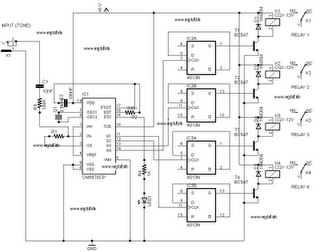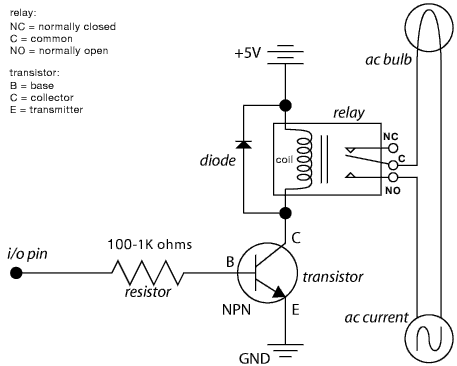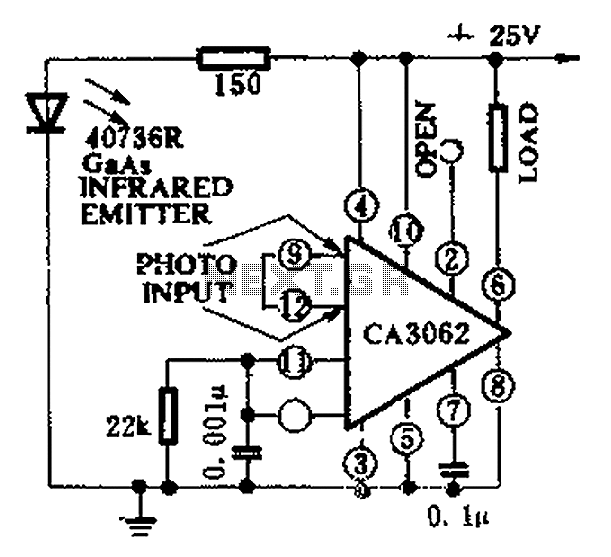
DIY Canon RC-1 IR remote control clone

This site explains the process of constructing a low-cost DIY Canon RC-1 infrared remote control clone utilizing an AVR microcontroller.
The project involves creating a remote control that mimics the functionality of the Canon RC-1, which is used for triggering cameras remotely. The core of the design is an AVR microcontroller, known for its versatility and ease of programming. The microcontroller is responsible for generating the infrared signals that the camera recognizes as commands.
To begin, the necessary components include an AVR microcontroller, an infrared LED, a resistor for current limiting, and a power source which could be a battery or a USB power supply. The schematic will typically show the microcontroller connected to the infrared LED, with the resistor placed in series to prevent excessive current flow that could damage the LED.
The microcontroller is programmed to emit specific pulse patterns that correspond to the commands of the Canon RC-1 remote. These patterns are derived from the original remote's signal, which can be captured using an infrared receiver and analyzed. Once the signals are identified, they can be encoded into the microcontroller's firmware.
The circuit design should also include a method for powering the microcontroller, which may involve a simple battery holder or a USB interface for convenience. Additionally, a push-button switch can be integrated to allow the user to activate the remote easily.
Overall, this project serves as an excellent introduction to microcontroller programming and infrared communication, providing a practical application that is both functional and cost-effective. Proper attention should be paid to the layout of the circuit to ensure reliable operation and to minimize interference from other electronic devices.This site describes how to build a low-budget DIY Canon RC-1 infrared remote control clone based on an AVR microcontroller.. 🔗 External reference
The project involves creating a remote control that mimics the functionality of the Canon RC-1, which is used for triggering cameras remotely. The core of the design is an AVR microcontroller, known for its versatility and ease of programming. The microcontroller is responsible for generating the infrared signals that the camera recognizes as commands.
To begin, the necessary components include an AVR microcontroller, an infrared LED, a resistor for current limiting, and a power source which could be a battery or a USB power supply. The schematic will typically show the microcontroller connected to the infrared LED, with the resistor placed in series to prevent excessive current flow that could damage the LED.
The microcontroller is programmed to emit specific pulse patterns that correspond to the commands of the Canon RC-1 remote. These patterns are derived from the original remote's signal, which can be captured using an infrared receiver and analyzed. Once the signals are identified, they can be encoded into the microcontroller's firmware.
The circuit design should also include a method for powering the microcontroller, which may involve a simple battery holder or a USB interface for convenience. Additionally, a push-button switch can be integrated to allow the user to activate the remote easily.
Overall, this project serves as an excellent introduction to microcontroller programming and infrared communication, providing a practical application that is both functional and cost-effective. Proper attention should be paid to the layout of the circuit to ensure reliable operation and to minimize interference from other electronic devices.This site describes how to build a low-budget DIY Canon RC-1 infrared remote control clone based on an AVR microcontroller.. 🔗 External reference





